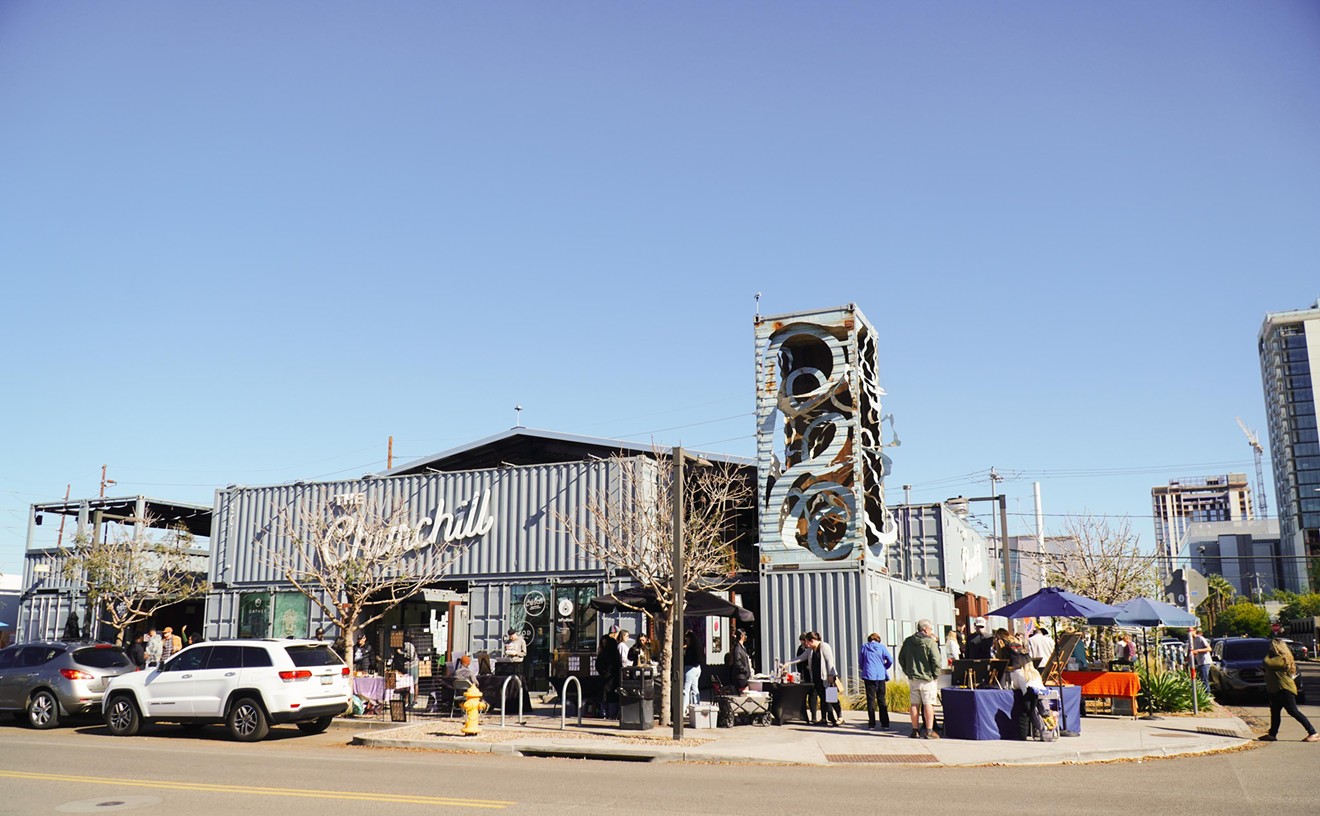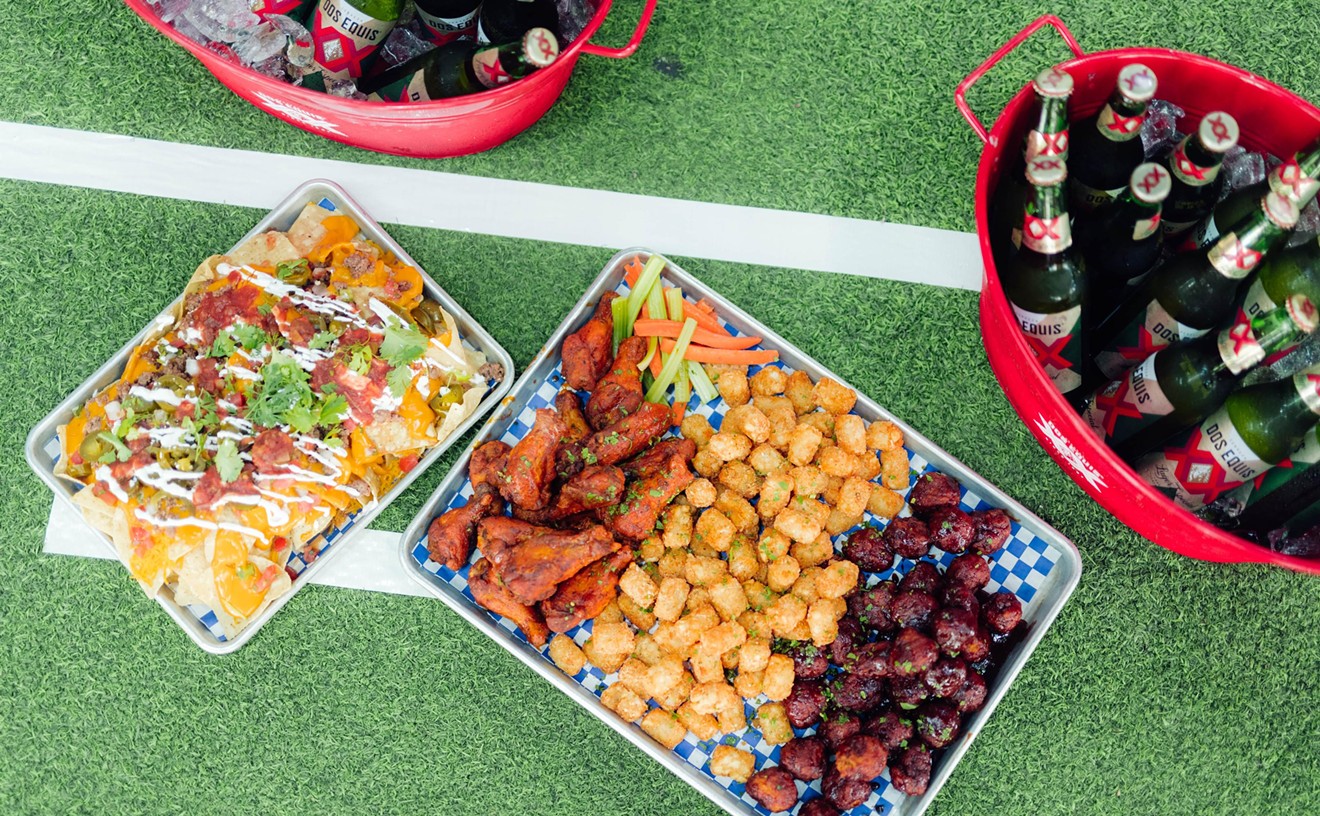"He's a total ham," says his sister and fellow sushi chef Lori Hashimoto. "He'll twirl his knives. He'll flip a ball of sushi from behind him over his shoulder onto a piece of seaweed to make a roll."
Koji says his fancy technique stems from sheer laziness: "You can either pick it up or just kind of flip it and make it come to you. You know it's easy, so you just get lazier and lazier. It becomes your style."
Koji picked up his style from his step-father and Hana's kitchen chef Kazuto "Kaz" Kishino, working summers in Kaz's California restaurant during high school and getting home-schooled to this day by Kaz and his mom, also a kitchen chef at Hana's.
Lori calls Koji and Kaz both "triple threats" because they have a handle on all three areas of Japanese cuisine: sushi, teppanyaki, and fine dining; although, Koji claims he can't cook for anything.
Today, we pick Koji's brain about his sushi technique, the brown bag lunches he couldn't escape, the best bone-removal method and if any deadly catches will be hitting the sushi boat decks and Hana's any time soon.
What's the best technique to keep your sushi roll from falling apart? It's really about just the feel of the roll, not brining it in so tight but not letting it be too loose. My rolls, my mom and Kaz, would say they're a little too tight. But in America, they drown it in soy sauce, so it has to stand up to the soy sauce. So I try to make an American-style roll, so it won't fall apart in the soy sauce but will still far apart in your mouth. It's about touch and feel, knowing what your customers want. If it's too big: Say something. We can make it any way you want it. I remember at the all other restaurants, the chef would say no to special requests. But I think, by the time you finish saying no and explaining why you can't do it, you already could have done it. And the customer would've been really happy too.How many sushi rolls do you roll on average each day? 250.
Hardest sushi to roll? They're really all just different in terms of the preparation you have to do, but the hardest is probably Natto-maki. It's this sticky type of fermented bean, so when you cut it, it leaves all the fermented sticky stuff all over your knife, your cutting board, everything. That's the one that you sit there and ask, "Really? You really want Natto-maki?" It's like all right... They're just, ugh. I've been doing everything for such a long time. To cut a piece of mackerel right then and there, I like it because it's a challenge. You cut it and debone it and skin it and you put it on sushi. But you know when you put it on the table you know it's going to be the best mackerel they've ever tasted, so I don't mind doing the little things.
What's the one flavor combination you couldn't live without? It has to be soy sauce, right, no matter what? It's one of the bases. You couldn't make about 90 percent of the dishes without it. There are five essential ingredients to Japanese food: Soy sauce, Mirin, Sake, bonito (fish stock), vinegar.
Anything you would never cook with? Star fruit. Is that the one that smells like feet? No, durian: If it don't smell good, I don't know how to cook it. At least on the sushi bar side, we don't have to know how to cook because everything is coming out raw. I couldn't bake bread if I tried.
Hardest kitchen lesson? My lessons are every day. For me and my sister, all of our cooking ability in our body is in our pinky. Whenever we're just thinking about something, whether something goes together, it all boils back down to the basics. Everything is still a lesson. Mom and Kaz don't ever want us to ever stop learning, so they're always showing us something. I think ever since we opened Hana, now it becomes a big responsibility to make sure we're consistent in giving you that really good food all the time.
How did you become interested in sushi? My summertime job was to go to California and work at Kaz's restaurant. Then, as I kept on sweating it out in the teppanyaki area, I kinda looked at the sushi guys and said, "Man, those guys aren't even doing anything! They're just standing there. And they're not even cooking their food." So I started asking Kaz a lot about sushi, and he started teaching me how to do sushi. Then it was either go to college or go into the restaurant field, because, at that time, it was very, very good money.
Easiest way to tell if you have bad fish? If it smells don't eat it.
What's the trick to getting all the bones out? Using your finger and just lightly touching where all the bones are supposed to be. After a while, you can just feel it: Handling fish, you know where the bones are, which helps. If I cut a bone with my knife, I can tell I'm cutting a bone. So I stop and take it out with tweezers.
Best advice you ever got? Kaz told me to always have space around you when you're cutting anything to allow for natural movement. And I've never forgotten it.
What did you want to be growing up? I don't really know what I wanted to be, I just know I wanted to be a millionaire. No matter what it was, I just wanted to make a lot of money at what I did.What was in your lunchbox growing up? Peanut butter and honey sandwiches. All the time. Every day. It never changed. I didn't know that I could get it changed. I just thought that all of the sudden you got your lunchbox and it was made by somebody, kinda like Santa Claus. There wasn't anything else. No potato chips. You bought your milk over there. It was just a paper bag with your sandwich and money inside to buy your milk; it was 45 cents. I didn't even know you could get hot lunch.
What's the first thing you ever made? The real first thing we cooked, besides throwing stuff in the microwave, was what my sister and I called baby chicken. We'd take chicken breasts with the skin on, cut it into chunks, salt it a little bit, cover it in corn starch, and then deep fry it. Our mom used to cook that a lot when we were little, and it was the first thing we decided we could actually cook by ourselves.
Where did you find the sushi boats and why was it crucial to have them? I was working at another restaurant, and I was going to start this concept up with the boats. I told our sales rep to order them, and he got them, but the owner wanted the plastic ones, not the wood ones. So the sales guy took the boats back, and they sat at the distributor for about a year. I would go in all the time and ask questions until I knew absolutely everything about them. Then one day, when we decided to open Hana, I said, "Okay, I'll take all those boats." My sister and I said if we ever had our own restaurant we'd have the sushi boats. My cousin's our carpenter and a very good wood-working artist, and he's actually making our new fleet of boats: They're going to be bigger and nicer so we can load up a whole bunch of stuff on this giant boat like an aircraft carrier.
How often do you bust out the boats? Every night. Lunchtime too. Every chance we get. When a boat comes to a table, people just look at it, and they're happy.
Any deadly sushi on the menu? We were thinking about it, because Kaz actually has the license to cut it, but we decided no. I've tasted it, and it's good, but it's not worth the risk.
This is our first installment of Chef Chat with the Hana Japanese Eatery crew. Check back tomorrow for a view from the kitchen with Chef Kazuto "Kaz" Kishino, and Thursday for two tasty recipes: One raw from the bar, and the other cooked up tableside.










